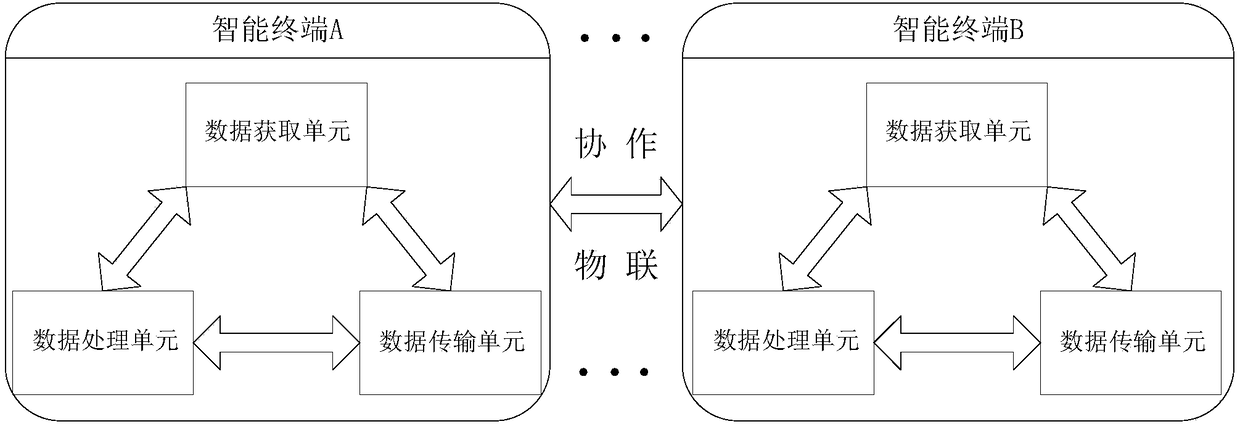Collaborative internet of things system based on object computing
A technology of networking systems and collaborative objects, applied in computing, transmission systems, program control design, etc., can solve the problems of IoT chips, modules, applications, and service industry chains, complicated technical fields, and isolated islands.
- Summary
- Abstract
- Description
- Claims
- Application Information
AI Technical Summary
Problems solved by technology
Method used
Image
Examples
Embodiment 1
[0028] A collaborative Internet of Things system based on thing computing, including a cloud database and several smart terminals, each of which is integrated with a data acquisition unit, a data transmission unit, and a data processing unit, and the data acquisition unit includes a data mining module, a data Receiving module and data splicing module, data transmission unit includes networking module, wired communication module and wireless communication module, eNDOS system is implanted in the data transmission unit, data processing unit includes cache module and calculation module, data acquisition unit of each intelligent terminal , the data transmission unit and the data processing unit are interconnected to form a collaborative IoT network, wherein:
[0029] The data transmission unit establishes a communication connection with the data transmission unit of other intelligent terminals through a wired communication module or a wireless communication module, and opens up the...
Embodiment 2
[0041] Such as figure 2 As shown, the process of obtaining data between smart terminals is the process of communication and data transmission between the two. In the OSI reference model, eNDOS does not involve the session layer and presentation layer, and the physical layer transmits bit streams. In the embedded platform The physical layer is implemented by hardware modules, and the hardware is used to encode and decode the transmission information. The data link layer verifies the received data and assembles the data frame into a data packet, calculates the verification information of the sent data packet and disassembles it into a data frame; the network layer judges the destination address of the data packet, and performs local processing when the destination address is itself, and the destination address For other nodes, it forwards according to a certain routing algorithm; the transport layer further processes data packets according to the protocol stack, and the communi...
Embodiment 3
[0043] The smart terminals in this example are the smart terminals used in the smart home system, and the smart speakers, smart refrigerators and smart rice cookers are used as examples for specific descriptions:
[0044] Data acquisition: Each smart terminal in the smart home system has two modes: autonomous data acquisition and passive data acceptance. For smart speakers, it passively acquires human voice signals, processes them and sends them to corresponding devices. For example, if a person says to the smart speaker "turn down the temperature of the refrigerator", the smart speaker will convert the voice signal into a corresponding digital signal for processing. For smart refrigerators, it can not only actively acquire data, that is, actively identify the types of items in the refrigerator, and adjust the temperature of the refrigerator based on this; it can also passively receive data, that is, receive instructions from smart speakers. For the smart rice cooker, it can ...
PUM
 Login to View More
Login to View More Abstract
Description
Claims
Application Information
 Login to View More
Login to View More - R&D
- Intellectual Property
- Life Sciences
- Materials
- Tech Scout
- Unparalleled Data Quality
- Higher Quality Content
- 60% Fewer Hallucinations
Browse by: Latest US Patents, China's latest patents, Technical Efficacy Thesaurus, Application Domain, Technology Topic, Popular Technical Reports.
© 2025 PatSnap. All rights reserved.Legal|Privacy policy|Modern Slavery Act Transparency Statement|Sitemap|About US| Contact US: help@patsnap.com


